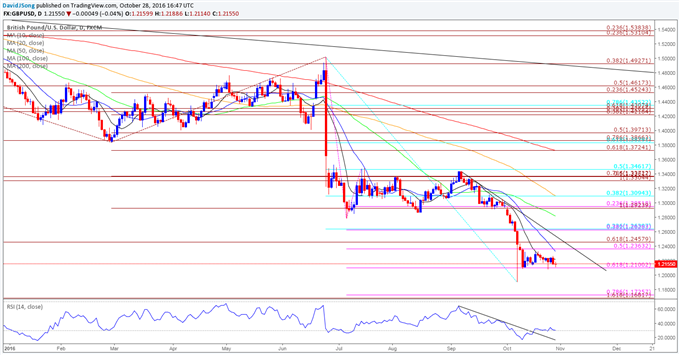The FTSE finished the week down slightly, but the real loser last weekwas UK PLC. The pound crashed as various factors come to a head. Upuntil July, the US Dollar was the currency the world loved to hate,last week it was sterlings turn to be punished....
The FTSE finished the week down slightly, but the real loser last weekwas UK PLC. The pound crashed as various factors come to a head. Upuntil July, the US Dollar was the currency the world loved to hate,last week it was sterlings turn to be punished. The Bank Of Englandinflation report was more dovish than expected, opening the doors topossible interest rate cuts before the year is out. This coupled with ahousing market that has fallen through the roof and warnings of a UKrecession being imminent pushed Sterling down 2.8% against the Dollarand 2.50% against the Yen on the week. It wasnt all one way trafficthough and the pound managed to recover some ground against the Euro inparticular, finishing down just -0.67. Just a day after the Poundscollapse, it was the Euros turn to swoon on speculation that theEuropean Central Bank would begin cutting interest rates next year toboost the shrinking Eurozone economy. The Euro finished down 2.17%against the Dollar on the week and now down 5.74% on the month.
World equities finished the week mixed. With the notable exceptionof the high tech Nasdaq, most world indices finished the week in theflat or down slightly. On the whole though, a relatively quiet economiccalendar and low summer volume muted activity after last weeksimpressive action. The conflict in Georgia barely registered a twitchon oil prices and the week closed with prices falling to $113.77. Also,due to the cessation of hostilities in Georgia and the resurgentDollar, Gold fell back well below $800 after a tentative recovery lastweek.
The financial sector was once again under pressure last week andwithout the FTSEs other major sector firing on all cylinders (oil),the index is showing weakness where it counts. It has recently beenreported that global banks losses & writedowns from the creditcrunch have exceeded the $500bn marker. To add to the gloom, New YorkUniversity economist Nouriel Roubini has recently estimated that thisfigure could double before the crisis is over.
The US housing market is still showing signs of weakness. Ifanything the problem is accelerating despite numerous calls for abottom over the last 12 months. Foreclosure activity increased by 55%year on year, with one in every 464 houses in trouble. The nascent UKhousing collapse still has some way to go to match the declines of theUS market, but it may not be long before the UK market registersequally grim readings.
Next week is relatively quiet with fewer top tier economicannouncements. The week starts with ZEW economic sentiment from Germanyon Tuesday morning, followed by US building permits and monthly PPIdata in the afternoon. Wednesday release of the minutes from the lastMPC meeting will be closely followed especially after the impact oflast weeks inflation report. Thursday brings UK retail sales figures,with revised GDP numbers coming on Friday morning. The weeks hottrading ticket will be Fed Chairman Bernanke speaking on Fridayafternoon.
Last week was quiet by recent standards with no large 300 pointrallies on the Dow as we saw the week before. On this note the therewas some interesting research from David Rosenberg of Merrill Lynch(credit to Barry Rithholtz for highlighting it).
Rather than being a sign of a market recovery, Rosenberg found thatevery 300 point rally on the Dow Jones Industrial average has occurredonly during bear markets. During the 2000 to 2002 bear market, the Dowhad fifteen 300 point gain days. Since the markets peaked aroundSeptember 2007, the Dow has technically been in a bear market andduring this period there have been seven days experiencing a 300 pointrally on the Dow. More curious was the fact that during the bull runfrom 2002 to 2007, there wasnt a single 300 point rally on the Dow.
According to Bespoke Investments (bespokeinvest.typepad.com) theaverage return three months after a 300 point move is just 0.06%,hardly grounds for the start of a spectacular rally. To take advantageof this, we can place a No Touch trade on the Dow Jones, predictingthat it wont touch 12,500 at any time during the next 90 days. Thiscould return 57% in betonmarkets.com if successful.




Tidak ada komentar:
Posting Komentar